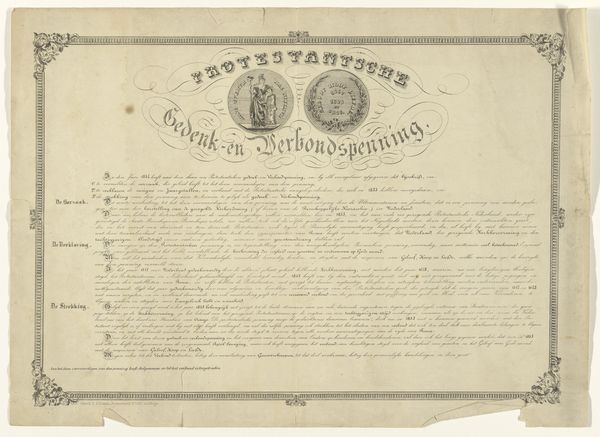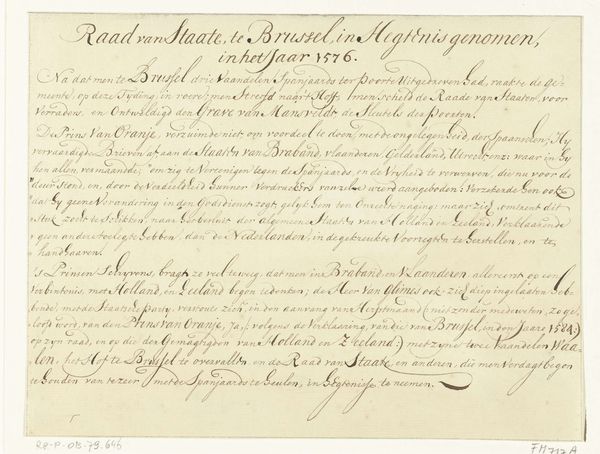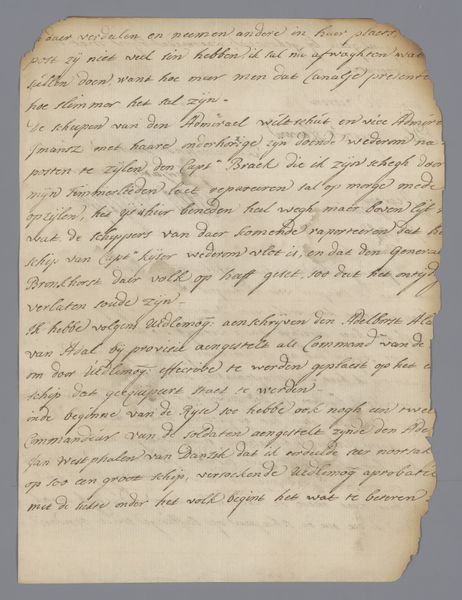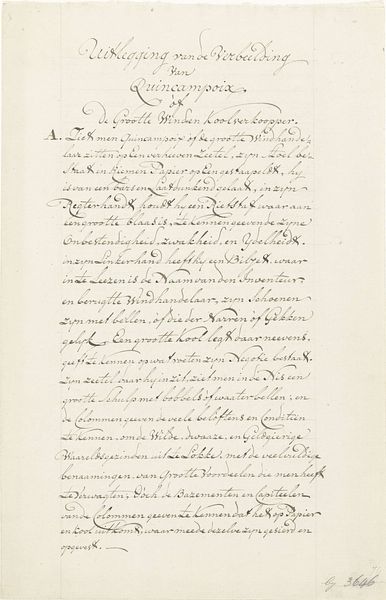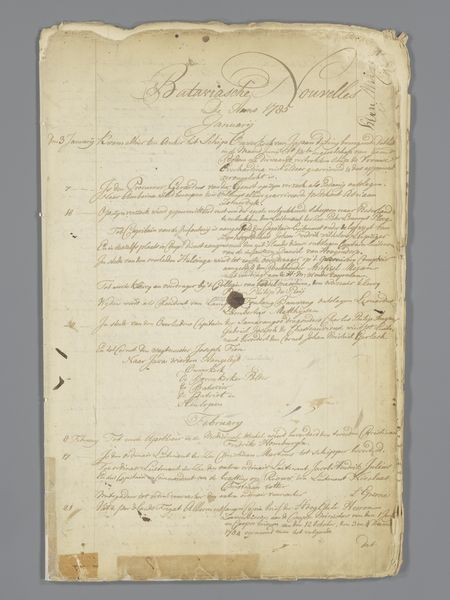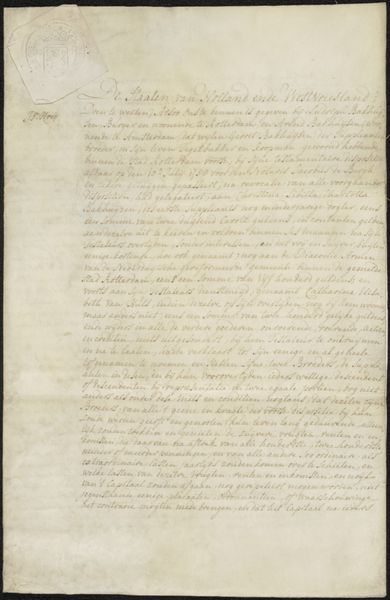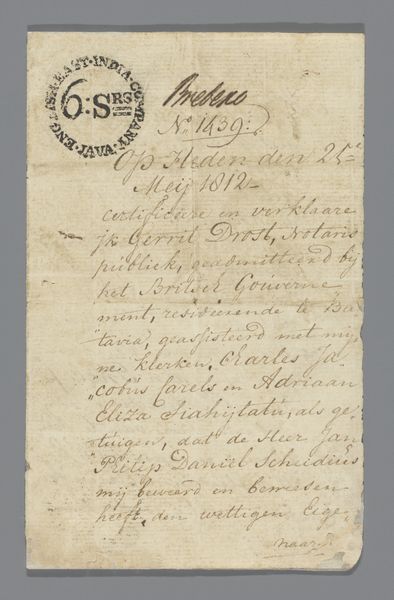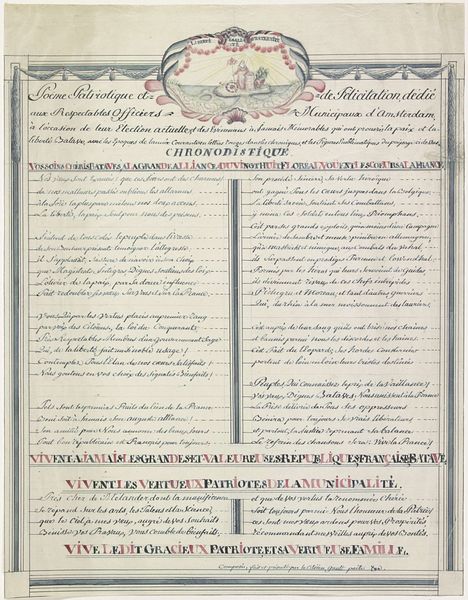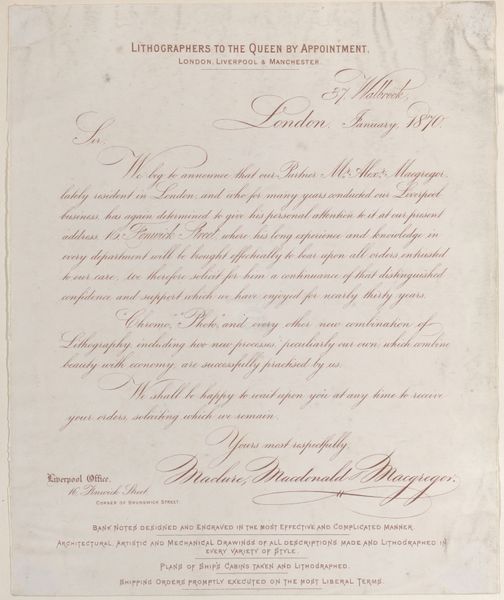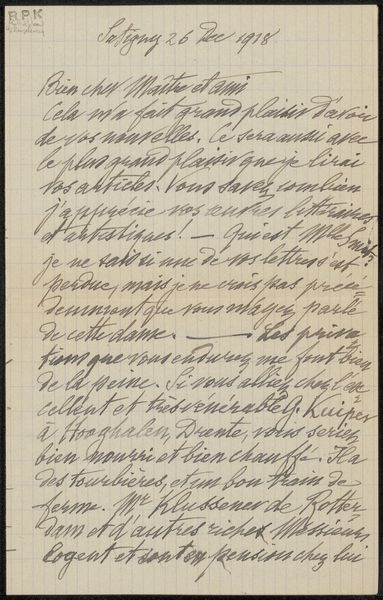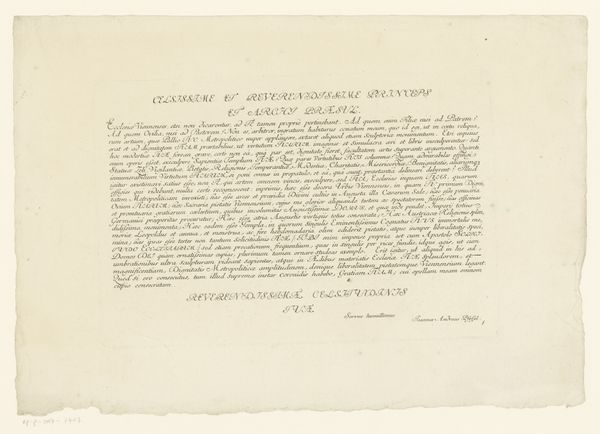
print, engraving
#
dutch-golden-age
# print
#
text
#
engraving
Dimensions: height 100 mm, width 145 mm
Copyright: Rijks Museum: Open Domain
Curator: Here we have a print from between 1826 and 1837. It's titled "Tekst over tapijtfabriek met ornamentele rand," and it was made by an anonymous artist. It seems to be an advertisement for a carpet factory. Editor: My first impression is one of detailed precision. The ornate border combined with tightly packed text creates a very dense and visually rich surface. It feels very industrious, yet restrained. Curator: Indeed. As a materialist, I find it fascinating how the very *act* of production is being advertised here. It’s an engraving, a readily reproducible medium, promoting the mass production of carpets. Notice the detailed description of techniques, acknowledging the innovative machinery and processes used by E.G.W. Cohen's factory. Editor: It also points to ideas about labour and wealth, I think. These factories represented significant shifts in the socio-economic structure of Amsterdam. The text isn’t simply touting products; it's celebrating technological advancement as evidence of "Vaderlandsche kunstelyt", which translates roughly to “national artistry”. Curator: Absolutely! It reveals the shift towards mechanization and the factory system. The ad specifically mentions "Machinaal spinnen" (mechanical spinning) to lure customers. Editor: Right, there’s also a fascinating social component to this announcement. It is geared towards customers "of these Northern regions", with the factory keen to elicit patriotic allegiance by alluding to "ties of devotion.” This could be interpreted as a reaction to broader international markets and concerns over national identity. Curator: So well put! It’s not just about selling carpets. It's about weaving together themes of industry, technological progress, national identity, and marketing—all meticulously rendered on a single sheet of paper. Editor: It's quite telling how art is incorporated into daily life; commercial intentions are married with decorative presentation. It shows us how pervasive art was across economic structures and how marketing strategically used art in the era. Curator: From this, we see that art itself can be industrial output: a material means of enticing sales in a very capitalistic market. Editor: This print invites reflection on a tapestry of themes as complex as any fine rug! It's great.
Comments
No comments
Be the first to comment and join the conversation on the ultimate creative platform.

